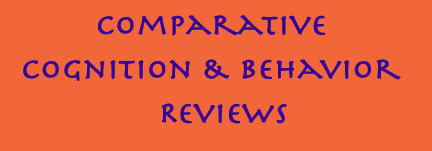 |
||
|
2007
|
Volume 2:93-110 |
|
|
|
|
|
|
|
|
|
|
|
Auditory Category Perception as a Natural Cognitive
Activity in
Songbirds
Christopher B. Sturdy, Laurie L. Bloomfield, Tara M. Farrell, and Marc T. Avey
University of Alberta
Ronald G. Weisman
Queen’s University
|
The authors summarize progress in research on how songbirds (oscines) categorize the acoustic communication of conspecifics. They found that category perception for the learned songs and calls of oscines are well described by four principles: The exemplars from a single vocal category are discriminated one from another. Exemplars of different vocal categories are more easily discriminated than exemplars of the same category. Vocal categorization transfers to novel exemplars. Lastly, the labels applied to sets of vocal exemplars are descriptive of the natural categories an oscine species uses to classify exemplars. The authors use bioacoustic data to generate statistical predictions about the importance of vocal features; field and laboratory tests confirm the importance of those features. In comparisons between the study of visual and auditory categorization tasks, the authors suggest that auditory tasks are more useful because (i) human photography and its reproduction are a poor match for avian visual systems, and (ii) real-world experience with conspecific vocalizations impacts auditory classification in later operant discriminations. Finally, the authors consider the enmeshing of prototypes and exemplars in the representation of learned vocalizations and conclude that evolution provides prototypes used in species recognition and that experience provides exemplars used to recognize individual conspecifics. |
• HTML
• Full-text PDF |
|
Published by the Comparative Cognition Society
How to reference this article:
Sturdy, C. B., Bloomfield, L. L., Farrell, T. M., Avey, M. T., & Weisman, R. G. (2007). Auditory category perception as a natural cognitive activity in songbirds. Comparative Cognition & Behavior Reviews, 2, 93-110. Retrieved from http://psyc.queensu.ca/ccbr/index.html